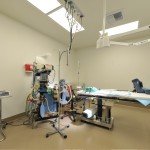About
Success
Treatment
Financial
Resources
Blog
Contact
Site Tools
Elective Egg Freezing
What you can expect
Egg freezing involves three steps — ovarian stimulation, egg retrieval, and freezing.
Ovarian stimulation
You are going to take some synthetic hormones to encourage your ovaries to produce many eggs — instead of one egg that is normally produced every month. Medications that you might need to take are:
- Medications for stimulating the ovaries: You might have to inject yourself with medications like menotropins (Menopur) or follitropin alfa or beta (Follistim AQ, Gonal-f).
- Medications for preventing premature ovulation. Your physician might prescribe a GnRH antagonist such as cetrorelix (Cetrotide) or a GnRH agonist like leuprolide acetate (Lupron). Note that GnRH is short for gonadotropin-releasing hormone.
During this treatment, your physician will check you regularly to make sure everything is okay. You will also need to undergo several blood tests to know how you are responding to ovarian-stimulation drugs. Typically, the levels of estrogen increase as egg follicles develop, but the levels of progesterone stays low until the eggs have been released from the ovaries (ovulation).
Follow-up visits will include vagina ultrasound—a clinical procedure that uses sound waves to produce a picture of the ovaries and other important female reproductive organs— to monitor how the follicles (fluid-filled sacs where eggs become mature) are developing.
When the follicles mature and are ready for egg retrieval (usually after 10-14 days), you will be given a trigger injection of hCG (human chorionic gonadotropin) such as Ovidrel or any other medication that can make eggs mature quickly.
Egg retrieval
Egg retrieval is carried out under mild sedation, typically in a clinic or your physician’s office. One of the most commonly used egg retrieval methods is transvaginal ultrasound aspiration. During this procedure, a small probe is inserted into the vagina to identify the egg follicles.
After this, a needle is guided into each follicle, and a suction device joined to the needle is then used to take out the eggs from the follicles one after the other. More than one egg can be removed from the ovaries, and research indicates that the more the number of eggs retrieved, the higher the chances of having a baby.
Note that you might have cramping after this procedure. Besides, you might experience constipation or get bloated for some time since your ovaries are still enlarged.
Freezing
Following retrieval, the harvested eggs are then cooled to very low temperatures (around -196 degrees Celsius) to preserve them for later use. Compared to the makeup of a fertilized egg (embryo), the makeup of an unfertilized egg makes it harder to freeze.
Vitrification is the most commonly used method for freezing eggs. The process involves the use of large concentrations of substances (cryoprotectants) that help prevent the formation of ice crystals during the freezing procedure.
After the procedure
Typically, you will be able to go back to your normal activities within 7 days of egg retrieval. Stay away from unprotected sex during this period to prevent an unplanned pregnancy.
Get in touch with your health service provider if you have:
- Difficulty urinating
- Severe abdominal pain
- Heavy vaginal bleeding
- A fever higher than 38.6 C (101.5 F)
- Weight gain of over 2 pounds in one day
Results
ICSI
When you are ready to use your frozen eggs, they will be thawed, fertilized with your partner or donor’s sperm, and transferred into your or a Surrogate mother’s womb.
Your health care team may advise that you go for a fertilization technique known as intracytoplasmic sperm injection (ICSI), during which a single viable sperm is injected into each mature egg directly.
Based on your age at the time of freezing the eggs, you have around 30 to 60 percent chance of getting pregnant after implantation. The younger you are at the time, the higher your chances of having a healthy live birth in the future.
Halloween 2019
Each year, Coastal Fertility Medical Center’s staff hosts a fun get together for our former patients and their families. View more photos from our 28th annual Miracle Babies Halloween event!Popular Searches
- Orange County Fertility Clinic
- Irvine, California Fertility Center
- Coastal Fertility Medical Center
- Free Fertility Seminar, Irvine CA
- In Vitro Fertilization and ICSI
- Best Orange County Infertility Doctor
- Southern California Fertility Specialist
- PGD, PGS Orange County
- Egg Donation and Surrogacy
Address
Coastal Fertility Medical Center15500 Sand Canyon Avenue
Suite 100
Irvine, CA 92618
©2024 | Sitemap | HIPAA/Privacy | Disclaimer and Privacy Policy
News from our Top Doctors

Our fertility clinic focuses on helping you build your family regardless of your sexual orientation or the gender you choose to identify with. We are even taking further steps to make LGTB people feel more welcome at our fertility clinic. Each of our patient-facing staff goes through LGTB training to let family-building clinicians provide necessary support and make you feel highly welcome.

Coastal Fertility Medical Center offers one of the most advanced fertility treatments and is completely transparent regarding the costs of procedures and any other expenses that you may have to pay before commencing your treatment. This differentiates us from some fertility clinics that reduce prices before the signing of the contract but charge you extra later on. We make sure our patients are well aware of any possible extra pricing that may occur over the course of their treatment.

The infertility industry is currently segmented, with each service or treatment being handled by a different provider. Our all-inclusive model simplifies an otherwise complex and difficult process. We are here to revolutionize the infertility industry by offering a one-stop-service model to assist our patients through infertility challenges while reducing physical, emotional, and financial risks.

Our globally respected team of specialists are helping improve IVF technologies to enter into a generation of better outcomes for infertility. Although you’ll have a doctor guiding you, you are also going to benefit from the experience and insights of other doctors during case review collaboration meetings, which take place every week. So, you won’t just rely on the expertise of a specialist but benefit from the knowledge of many reputed fertility experts.

Our team specializes in difficult cases and help patients who may have been considered “hopeless” at other fertility clinics. Thanks to our personalized solutions, expertise, and internal collaboration, weare able to maximize pregnancy success rates that are well above the industry average, even in difficult infertility cases.

We know that every situation is different and that everyone requires different treatments. Unlike facilities that take “a one-size-fits-all” approach for all cases, our fertility specialists use more than 40 customized protocols to raise the chances of success. The customized approach even extends to our fertility laboratory. Our on-site lab director and his highly-experienced team nurture every embryo and egg to increase the odds of success of each cycle.

Coastal Fertility Medical Center offers one of the most advanced fertility treatments and is completely transparent regarding the costs of procedures and any other expenses that you may have to pay before commencing your treatment. This differentiates us from some fertility clinics that reduce prices before the signing of the contract but charge you extra later on. We make sure our patients are well aware of any possible extra pricing that may occur over the course of their treatment.
International Fertility Preservation
Preserve your fertility today and take control of your future!
Thanks for Joining!
We will be sending new updates soon.
You’re all set!
Your new patient forms have been submitted and received. We look forward to seeing you at your appointment.
Send us a message, we’ll be happy to answer any questions!
Please complete the form so we can best serve and help you with your journey towards parenthood.
On Demand Seminar Registration
Following the Preimplantation Genetic Screening process, which helps ensure there are normal chromosome numbers and detects possible genetic disorders, the most healthy embryo(s) are selected to be implanted into your or your chosen surrogate’s womb. 2 weeks after the transfer of the embryo, your physician will conduct a final blood test to determine the level of hCG (human chorionic gonadotropin) in your body. Increased hCG levels usually indicate a positive pregnancy test.

For fertilization to take place, the collected egg and sperm are combined in a petri dish and cultured in an embryo incubator. This dish is closely watched to check whether any of the eggs have been fertilized. Once the egg is fertilized, it is referred to as an embryo or a blastocyst on the 5th day of development. Our in-house embryologist carefully nurtures every embryo to the right time, even if it means working outside the standard business operating hours. For instance: If an oocyte is not mature, our laboratory will wait for it to mature and then ICSI it at the right time.

The egg retrieval is a slightly invasive medical procedure that takes about 20 to 30 minutes. You will be given an anesthetic to make you sleep for the duration of the procedure. Using ultrasound technology, your doctor will harvest your eggs transvaginally with a small, hollow needle connected to an ultrasound probe. Once your eggs are collected, your partner’s semen or donor sperm you have pre-selected is used for fertilization. The sperm are washed and prepared, and the top-quality sperm extracted is used to fertilize the eggs.

Your doctor will create a customized medication schedule that contains information about the fertility medications and hormone injections you have to take. Medication and injections are taken to encourage your ovaries to mature a large number of eggs for fertilization. Since women don’t respond to fertility drugs and hormones the same way, personalized protocols are crucial to the IVF cycle success. At Coastal Fertility, we will monitor you closely, letting you understand the changes occurring in your body and keeping track of how your egg follicles are growing.

On-site consultations typicallyinclude a standard fertility evaluation, consisting of a physical examination, complementary follicular ultrasound, and testing to enable your doctor to know your present fertility status and draw up a treatment plan.

This consultation includes a detailed medical evaluation with a doctor. You and your physician will review your health records and have enough time to talk about your goals and get answers to your questions. We recommend that you jot down all your questions before the visit to allow you to make the best use of the time spent with your doctor.

Your Reproductive Endocrinologist will take all factors into consideration and create a comprehensive plan of care, otherwise known as the treatment plan. This plan will include treatment recommendations from the physician and enable your financial coordinator to make a precise quotation once you meet.

Our globally respected team of specialists are helping improve IVF technologies to enter into a generation of better outcomes for infertility. Although you’ll have a doctor guiding you, you are also going to benefit from the experience and insights of other doctors during case review collaboration meetings, which take place every week. So, you won’t just rely on the expertise of a specialist but benefit from the knowledge of many reputed fertility experts.

The infertility industry is currently segmented, with each service or treatment being handled by a different provider. Our all-inclusive model simplifies an otherwise complex and difficult process. We are here to revolutionize the infertility industry by offering a one-stop-service model to assist our patients through infertility challenges while reducing physical, emotional, and financial risks.

Our fertility clinic focuses on helping you build your family regardless of your sexual orientation or the gender you choose to identify with. We are even taking further steps to make LGTB people feel more welcome at our fertility clinic. Each of our patient-facing staff goes through LGTB training to let family-building clinicians provide necessary support and make you feel highly welcome.

We know that every situation is different and that everyone requires different treatments. Unlike facilities that take “a one-size-fits-all” approach for all cases, our fertility specialists use more than 40 customized protocols to raise the chances of success. The customized approach even extends to our fertility laboratory. Our on-site lab director and his highly-experienced team nurture every embryo and egg to increase the odds of success of each cycle.

Our team specializes in difficult cases and help patients who may have been considered “hopeless” at other fertility clinics. Thanks to our personalized solutions, expertise, and internal collaboration, weare able to maximize pregnancy success rates that are well above the industry average, even in difficult infertility cases.

Upon your arrival, you will check in with a Patient Care Coordinator. We will obtain your insurance information for benefits verification, a copy of your identification and take a picture for your electronic medical chart




































